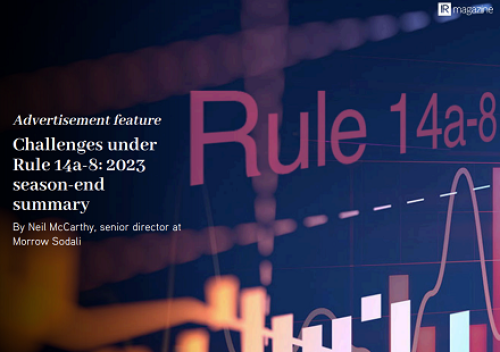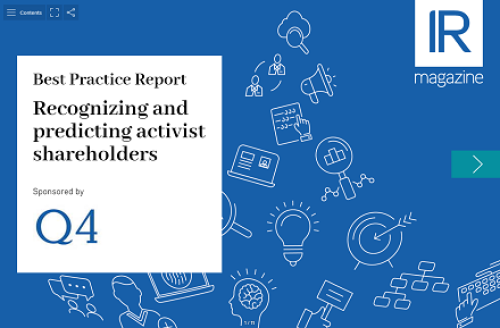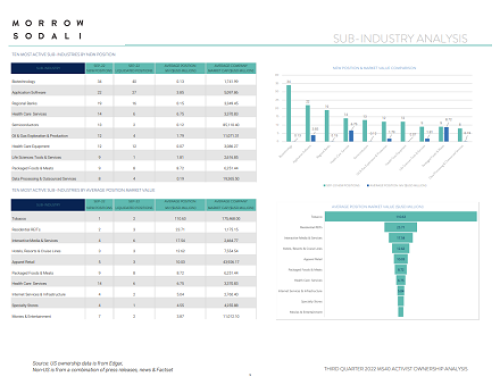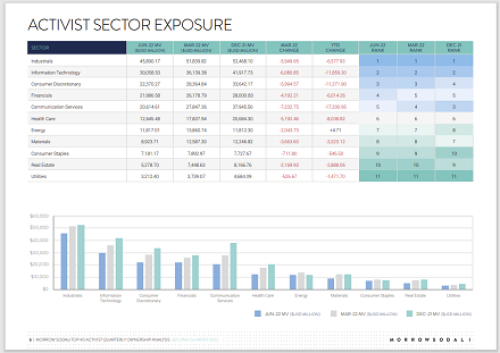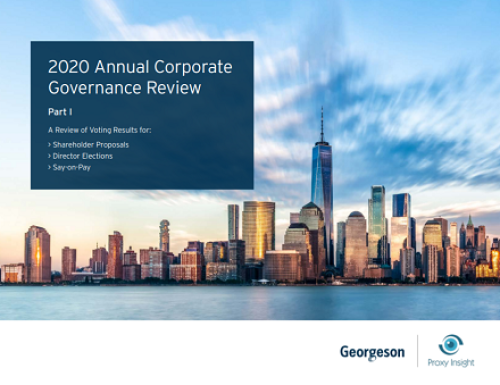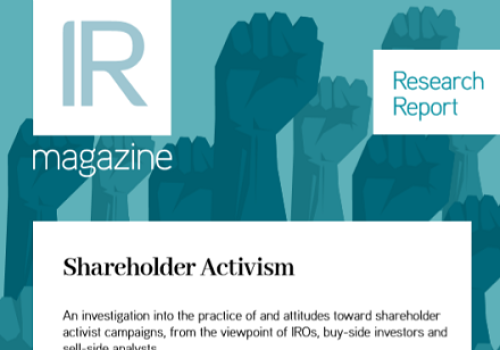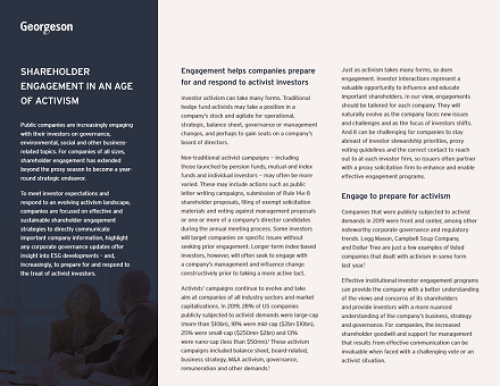Proxy solicitation firm’s president and CEO talks shareholder activism trends
Bruce Goldfarb, president and CEO of New York-headquartered Okapi Partners, is modest when asked what sets his firm apart from its peers.
But the proxy solicitation and investor response specialist clearly has an edge: Okapi only launched in 2008, as the global financial crisis was setting in, but by 2015 it was advising more activist investors than any other proxy firm, according to the most recent Thomson Reuters Global Shareholder Activism Scorecard.
 |
While Okapi ranks second overall – behind Innisfree M&A – for total number of campaigns among all proxy solicitors surveyed, it proved the most popular by far among activist investors. Of the 34 campaigns it worked on last year, 25 of its clients were activist investors; just nine were target companies. Innisfree M&A and DF King, the next most popular firms, advised activists in nine campaigns apiece in 2015.
Add this to the fact that last year saw the highest number of shareholder activist campaigns on record with a total of 507 – an increase of 73.6 percent over 2014 and 28 percent over the previous high in 2012, according to Thomson Reuters – and it’s clear that Okapi’s client list is likely grow too.
The build-up to 2015’s record number of activist campaigns predates Okapi’s founding, explains Goldfarb, who cites a number of reasons for the rise. First is the historic volatility markets have seen in the past decade – ‘really since 2006/7 as we ran up to the 2008 meltdown,’ he explains. ‘During that time period, the investor base has realized that there is significant value to being more active and vocal about the investments that they own.’
Successful campaigns increased interest in being active; and those successes attracted more money to the asset class and campaigns began to draw support from traditional institutional investors. More money also ‘meant that not only was activism something that could be used as a tool at small and mid-cap companies,’ says Goldfarb, ‘but you could also be active with large and even mega-cap companies.’
And how does Goldfarb expect campaign numbers to change in 2016? ‘Based on the discussions that we’re having with activist clients – and with our corporate clients – activism is an embedded fiber of the investment process right now.’
Minding manners
As activism has become more accepted and mainstream and as companies have in some ways come to terms with the changed landscape, the tone of campaigns has changed somewhat. ‘There is a growing recognition that it might be worthwhile to acknowledge and embrace concepts brought forth by investors at an earlier stage,’ says Goldfarb. There will always be activists and campaigns that take a tough tone, and Goldfarb agrees that there are still times when it appropriate to ‘truly rattle your saber.’ But on both sides, he says, ‘we’re seeing less of an interest to stake your ground at the poles and more of an interest to come towards the middle.’
This is reflected in the number of activist campaigns that settle before coming to a vote. There are a number of reasons an activist campaign might not go all the way but of last year’s 507, just 31 went to a vote, says Goldfarb. That’s been pretty constant over the past five years, when between 25 and 32 went to a vote.
The golden ticket
Part of the reason activists are being more courteous is that what they really want is to get into the boardroom – and not just because of the increased focus on corporate governance that’s emerged over the last few years.
Having representation at board level means investors know that the issues they want addressed at the company are at least reaching the decision-makers, says Goldfarb. This applies even if the ultimate goal might be more about dealing with a cash pile or how the company spends on operations, for example. ‘For most activists – especially in the volatile markets where M&A may or may not ultimately be a solution and certainly not in the short term – getting onto the board allows the investors to work with management to address the problems with more options.’
Anyway, if a board seat is as an investor’s ultimate goal, it makes sense to keep things civil. ‘Our successful clients on the activist side recognize that when they win board seats, the war is over – you have to shake hands and work together,’ says Goldfarb. ‘Our corporate clients, when they’ve reached a settlement with an activist and welcomed an activist into the boardroom, know that they want to get the most value out of the board working together and exchanging ideas.’
Any nastiness will simply make that reconciliation harder.
Stepping up your IR game
What Goldfarb says he is seeing from corporates in response to the increase in activist campaigns is a move towards ‘activist preparedness’.
Companies are beginning to think like activists and to take a critical view of their own operations, says Goldfarb: ‘Firms don’t want to be defending themselves against an activist who comes with ideas that they haven’t looked at first.’
Look at your shareholder base, he advises. Think about how those investors think and behave, how they have voted in the past, how they may vote in the future. And find your vulnerability: whether it’s structural, your relative underperformance, an operational issue or because your company has operations that [don’t fit well] with how the firm works.
‘Where companies have strengthened their defense is in their investor relations outreach and in articulating their message and their PR campaign,’ says Goldfarb. ‘In the past, companies were frequently caught flat-footed or entirely defensive in reaction to an activist coming forth. Now they are not only fighting back but they're also on the offensive in articulating their message to the market.’

